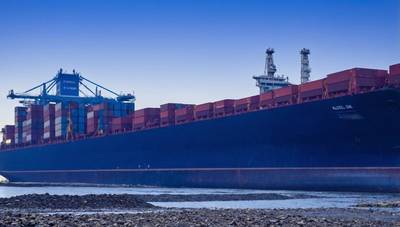Russell: China's imports of major commodities, other than iron ore, are decreasing.
Iron ore, despite steel's signs of pressure, bucking this trend and restraining imports in China.
The General Administration of Customs released data on Friday showing that crude oil, natural gases, copper, and coal have all declined since September.
In October, China, the largest crude oil importer in the world, had arrivals of 11,39 million barrels of crude oil per day. This was the third consecutive monthly decrease and down from 11,50 million bpd.
Most likely, the easing of oil imports is a reflection on the higher global prices at the time that October cargoes were arranged.
Benchmark Brent futures reached a six-month peak of $81.40 per barrel on June 23, during the short conflict between Israel and Iran. They then retreated, reaching a low point of $66.34 a barrel by July 1. However, they again trended upward to reach $73.63 a bar by July 31.
Since then, the oil price has been falling on a steady basis with occasional spikes higher. This is largely due to geopolitical events, such as President Donald Trump's announcement of new sanctions against Russia's crude producer.
Brent crude oil ended Friday at $63.63 per barrel. The current lower prices will likely encourage China's refiners increase their imports even if most of the crude is stored in commercial and strategic stores.
Imports of natural gases, which totaled 9.78 million tons in October, were down 11.5% compared to September's 11,05 million, and 7.2% compared to the 10.54 millions in October of last year.
The imports of super-chilled fuel from Europe have led to higher spot prices, causing a decline in the volume of imported liquefied gas.
The drop of 9.7% in unwrought copper imports in October compared to September is likely due to higher prices.
Arrivals in October were 438,000 tonnes, down from 485,000 in September and 506,000 in October 2024.
The copper price has been rising since April. However, the gains have accelerated in recent months. London contracts rose 12.8%, from $9,927.50 per ton to a new record high of £11,200 per ton on 30th October.
COAL, IRON ORE
China's imports of commodities are not always driven by prices. Coal is a good example.
Imports of all grades coal fell 9.3% to 41.74 millions tons in October from 46.0 million tons in September, and also 9.8% compared with October last year.
In the week ending July 4, the commodity reporting agency Argus assessed Indonesian coal, which has an energy content per kilogram of 4,200 kilocalories at $40.45 a tonne.
The grade is still well below its $52.30 price from the same time in 2024.
China's imports are likely to recover by the end of the calendar year, as the winter in the north is approaching and domestic coal prices have increased.
The surprise package of China's commodities imports was iron ore, which arrived at 111.31 millions tons.
This was a drop of 4.3% compared to September's record-high imports of 116.33 millions, but it was also up 7.2% compared to October last year. It was the fifth consecutive month where imports exceeded 100 million tons.
The strong imports are not price-related. Benchmark contracts in Singapore, for example, have been relatively stable and have remained in a narrow range of around $100 per ton this year.
Steel production also has been weak, falling to a 21 month low of 73.49 millions tons in September, and output for the nine months of this year is down 2.9% compared to the same period of 2024.
SteelHome consultants SteelHome monitor port stockpiles. It seems that iron ore prices are strong because inventories have been rebuilt.
Iron ore imports are likely to be resilient in the final months of the year as inventories remain below the 150.7 millions tons that they reached last November.
You like this column? Open Interest (ROI) is your new essential source of global financial commentary. ROI provides data-driven, thought-provoking analysis on everything from soybeans to swap rates. The markets are changing faster than ever. ROI can help you keep up. Follow ROI on LinkedIn, X.
These are the views of the columnist, who is also an author. (Editing by Jamie Freed)
(source: Reuters)





